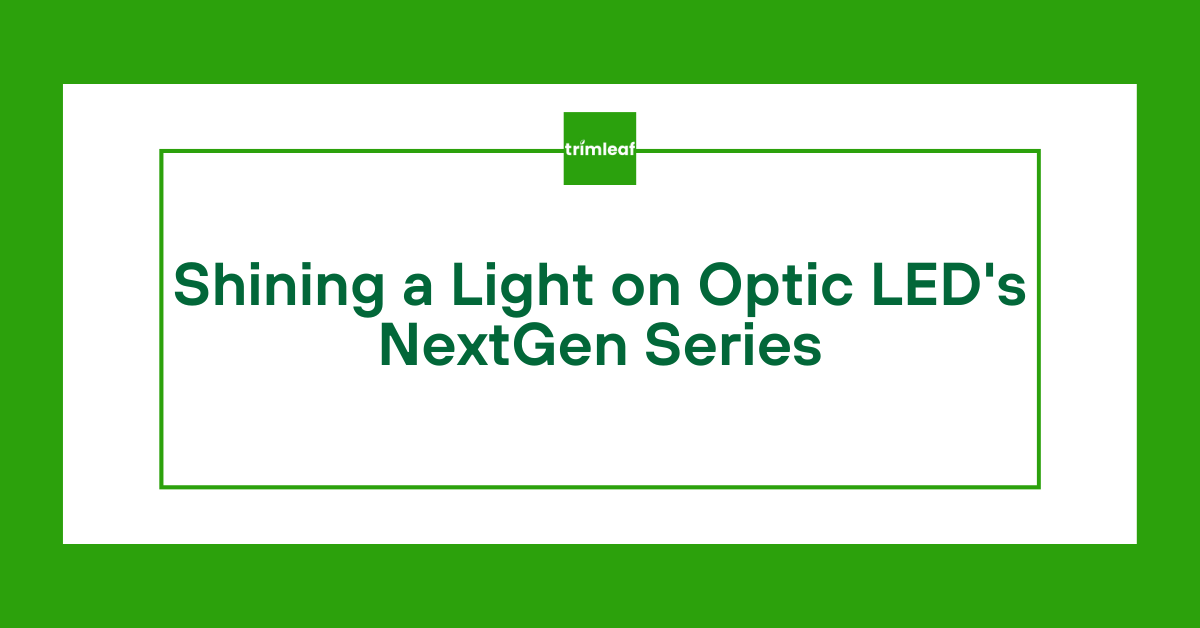
Optic LED is back once again with a new set of offerings. Updating their Gen 2 grow lights, the company offers the NextGen grow lights. According to Optic LED, one can expect a few changes that make a significant impact on the quality of the lighting.
So what changes can one expect with the NextGen series?
What’s new with Optic NextGen series?
The NextGen series has two new features: an added LED array for each light bar and independent dimming for each array. The added array gives you individual red, blue, and white LEDs, providing better spectrum coverage. Combined with the independent dimming for each spectrum, you can create custom lighting recipes for the growing plants. Another advantage of having individual dimmers is that you don’t need to adjust the height of the grow light from the canopy. With independent control, it takes full spectrum coverage up a notch, covering the whole plant cycle but also the needs of most plants.
Optic LED Slim 320S NextGen
The Slim 320S NextGen is a grow light designed for small to medium-scale growers. It covers a grow area of 2 x 4 feet. With the redesign implemented on the NextGen series, this grow light boasts an efficiency of 3.7 umols/J.
This grow light uses Samsung LH351H deep red, royal blue LEDs, and white LM301H LEDs for superior lighting quality. And with the individual dimming made possible with the three Meanwell drivers, you can create custom lighting spectrums for your plants.
The Slim 320S NextGen is also compatible with the Optic Touchscreen Controller that lets you automate your dimmer settings.
Optic LED Slim 600H NextGen
The Slim 600H NextGen sports the same design and component upgrades as the Slim 320S NextGen. Based on the Gen2 version, this reboot of the Slim 600H is ideal for vertical farming and features the same bar design and footprint coverage of up to 7 x 7 feet. It also steers away from the Cree LEDs and uses Samsung LEDs now. The flexibility on this 600-watt grow light remains the same. You can use the Slim 600H for soil, hydroponics, aeroponics, and aquaponic systems.
Optic LED Slim 650S NextGen
The Slim 650S NextGen works best for medium to large-scale growing. With a minimum footprint of 4 x 4 feet, the Slim 650S NextGen can cover up to 7 x 7 feet footprints.
Using the adjustable dimmer for each spectrum, you can fix this grow light at one height and adjust the spectrum without raising or lowering the grow light during the cycle. With a total power consumption of 660 watts, the Slim 650S NextGen can replace thousand-watt HPS grow lights and provide superior lighting. And like the other NextGen grow lights, the Slim 650S may also be used for different growing medium. You can also connect this grow light o the Optic Touchscreen Controller.
Slim 750S NextGen
The flagship in this series, the Slim 750S NextGen, works well for large-scale and even in some medium-scale operations. This grow light can cover up to 7 x 7 feet of grow spaces. A grow light of this size can emit a lot of heat, but with its overbuilt heatsink, the Slim 750S NextGen can manage excess heat through passive cooling.
Running a large operation isn’t a problem with the Slim 750S NextGen. You can daisy chain up to 200 grow lights to cover an enormous indoor growing facility. This grow light also runs up to 775 watts, making it more efficient than HPS grow lights.
Should you upgrade to NextGen?
There aren’t many differences between the Gen2 and the NextGen grow lights. But the differences between the three independent spectrums significantly affect the overall light quality. If you want the best combination of red, white, and blue to get the maximum yield, then an upgrade to NextGen will make a big difference. But if you can do without much tweaking in the spectrum recipes, then the current Gen2 should suffice.
Conclusion
The improvements brought by the NextGen series are game changers, allowing you to maximize yields while reducing the effort needed in creating the best lighting recipes. The customizable spectrum might be a challenge for new indoor growers. But, if you’re familiar with how each range operates, then the NextGen series is something you should consider.








